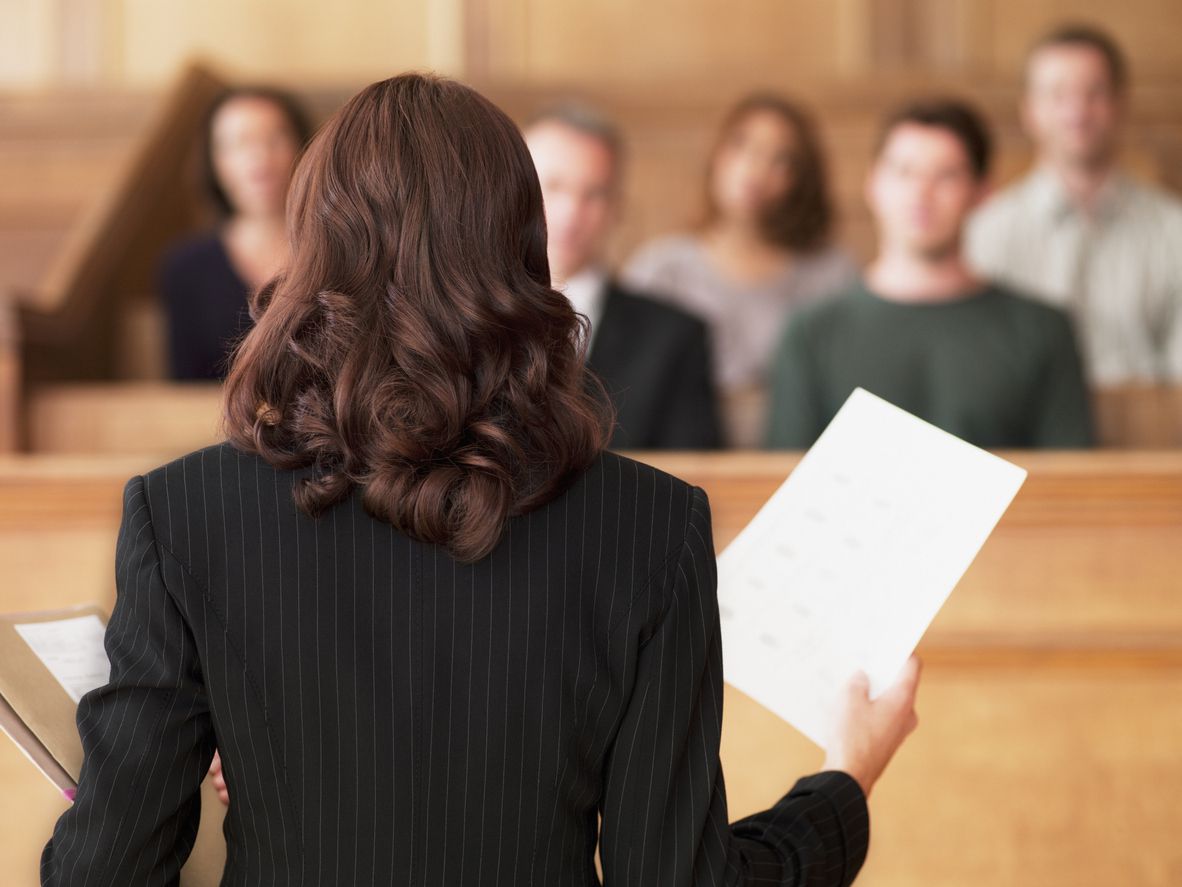At trial during the plaintiff’s case for In re Burlington Northern Inc., 822 F.2d 518 (5th Cir. 1987), lead defense counsel was viewing videotaped deposition testimony for the first time from one of the key witnesses, a CEO, and founder of one of the defendant companies. “I nearly fell out of my chair,” he stated later, and indeed, it was the worst – the most pugnacious, insouciant — witness performance ever seen by this author to this day. Santa Fe Railroad remained as the only defendant in the antitrust case, linked to the other railroads by a single document. The testimony by the sole Santa Fe witness, deceased by the time of trial, was neutral and inconclusive. Nonetheless, Santa Fe sustained damages from the jury of over $1 billion (treble damages from an award in excess of $334 million) – revealed later in post-trial interviews to be chiefly the result of abhorrent witness performance from the other railroad executive’s depositions, despite the scant connecting evidence with Santa Fe.
In essence, the testimony from absent defendants was so noxious as to contaminate the lone remaining defendant at trial, as though their testimony had generated enough “voltage” to create a charge that “jumped the gap” between the other railroads and Santa Fe, despite the meager evidentiary connection between them. Thus, not only did witness performance dominate the entire trial, but the outcome was ultimately controlled by witness performance from parties who were not even present in the case to be decided.
In the present discussion, we refer to the “heart of darkness” as that murky, subjective realm in which jurors make character assessments that decidedly tilt the playing field in complex business litigation, specifically antitrust matters. The negative connotation is utilized since, when this tilt occurs, it is not usually a happy matter for the party whose witness is involved. Just like voters in elections, jurors do not vote for the best, they vote against the worst, and when witnesses dominate, it is usually because they have done something wrong. Accordingly, the current discourse considers the role of witnesses in antitrust litigation from a psychological perspective by a psychologist, as most strictly “hard” evidentiary matters are usually well under control of the experienced antitrust litigator. Character, persona and subjective performance of his or her witnesses, however, are not.
Juror Verdict Decision Calculus
Over thirty years of research in both real and mock trials involving antitrust cases has revealed that, generally speaking, jurors attempt to problem-solve antitrust cases as they do other cases – namely, by primarily utilizing a dispassionate, rational approach in a search for objective evidence. For antitrust cases, such “hard” evidence might, for example, consist of documents or communications suggesting improper collusion, price-fixing, segmenting or allocating markets, and the like. Jurors factor in witness performance in various ways, depending on both the nature of such evidence, and the prominence and character of the witnesses themselves. When such “hard evidence” is lacking or ambiguous, and/or when the witness performance is salient or exceptional in some way, jurors shift their emphasis to character judgments of the litigants – perceptions of key witnesses — drifting into the foggy realm of interpersonal motives, which, from the standpoint of the plaintiff’s allegations, is linked to the “heart of darkness” at the core of the case. In this regard, the manner in which antitrust cases are construed by jurors is similar to fraud, misappropriation and other complex business cases: The border or limit where hard evidence fails jurors represents a jumping off place into the subjective world of the witnesses’ demeanor and nonverbal behavior, where an emotional impetus is derived by jurors to find for one side or the other.
Thus, while these cases would normally be resolved based on the nature of the hard evidence, in antitrust and other complex business cases this evidence is frequently piecemeal, fragmented, inconclusive or equivocal. Consequently, to the extent that these characterizations of the evidence apply, or in situations in which the witnesses simply dominate as a result of the impact of character, witness performance becomes all the more dispositive. Moreover, the impressions of the witnesses then “color” the interpretation of such evidence when that evidence is in fact minimal, tenuous, or controvertible, as in the Burlington Northern exemplar. Thus, the qualitative significance of certain aspects of the evidence – and thus the verdict itself — can be significantly altered or affected by the perceptions of the witnesses’ motives or character.
Furthermore, depending on the “cognitive style” of the juror – a juror’s characteristic manner of making judgments of a dispute – witness perceptions may play more of a central or primary role; for example, some individuals start with who the players are, what they are like, and then work outward from there in problem-solving the case, rather than starting with “hard evidence” per se. Indeed, in the discussion below of a general theory of how jurors process litigation, it is posited that most jurors operate in this fashion. Finally, a determination of damages – how much, if any, should be awarded – is almost universally driven by witness performance. Impudent, smug, arrogant or other unsavory conduct is typically associated with inflated damages awards in business cases across the board.
A General Theory of Juror Liability Decisions
Over the last four decades, compilation of real and mock trial results, combined with verification from post-trial interviews, have resulted in the formulation of a general theory for how cases are decided by jurors. As a “general theory” we refer to a universal psychological process, a basic means by which verdicts are decided by jurors regardless of the type of case or the venue.
In the late 70’s and early 80’s, trial consulting firms were just emerging on the scene in civil cases, and the founders of one of the largest of these informed clients and press that “jurors make up their minds during opening statements” — a statement that sent a shock wave throughout the litigation community (and which is still debated to this day). Working at the firm in 1983, I had the opportunity to put this assertion to the test while conducting actual post-trial juror interviews. It failed. Jurors told me instead that they were making up their minds (i.e., deciding the verdict) in the case later, while watching the witnesses. Evidence was piling up that it may not be some jurors who start with the witnesses – rather, it may be most of them.
Over time an alternative theory, denoted as the “Cognitive Map,” was formulated in which it was posited that jurors typically start with the witnesses, asking first the question, “Who are these guys?” – a judgment call that is ultimately resolved based on fundamental parameters of trustworthiness, credibility, and likeability. These parameters are “measured” by jurors primarily as a function of nonverbal behavior – body language, mannerisms, vocal intonation, facial expressions, posture, eye contact, movements, and so on. Academic research on nonverbal behavior has estimated that the total proportion of the overall impact of a communication that is regulated or determined by such nonverbal parameters is as high as 93%. Thus, only 7% of a communication’s ultimate meaning or significance is a function of the words themselves.
As a result, under the Cognitive Map theory, the starting point for jurors in making assessments of the litigants is 93% determined by their nonverbal behavior that is extracted quickly and in a primitive manner based on preliminary perceptions of witness persona from the courtroom.
After answering the initial question (“Who are these guys?),” the second question in the Cognitive Map is “What are their duties and responsibilities?” In other words, what is it that they should have done but failed to do, and/or what did they do that they should not have done? Notice that to answer this second question, knowledge of at least some of the evidence must be obtained by the juror, whereas to answer the first one, knowledge of the evidence is not a prerequisite. Thus the Cognitive Map theory differs from the more evidence-based processes considered at the outset, in that it truly begins with what psychologists call “person perception” – it has a beginning point that is independent of any evidence, and which is entirely a function of character, temperament, and other personality/communication variables, regardless of the claims, issues, themes and arguments comprising the case itself.
To derive a verdict under the Cognitive Map theory, jurors use the answers that they have obtained for these first two questions as a filter or lens through which the remaining case issues, themes, arguments and evidence are processed and interpreted in order to generate a verdict. In other words, the personality characteristics obtained in response to the initial question (“Who are these guys?”) and behavioral expectations generated in response to the second (“What are their duties and responsibilities?”) create a template within which the ensuing evidentiary case is evaluated. Obviously, gaining a tactical advantage in a case therefore requires tilting the playing field in an advantageous way by using proactive measures in generating favorable impressions for one’s own witnesses, and portraying the evidence in such a manner that duties and responsibilities are held — and violated — by the opposition, and not by one’s own side.
Deceptive Communication – the Heart of Darkness
In the final analysis, the difference between the processes described at the beginning, in which jurors search for objective or hard evidence first, versus the processes outlined in the Cognitive Map theory, in which jurors generate perceptions of the witnesses first, amounts to a discrepancy in temporal ordering of events – the two explanatory systems do not differ in their assessments of the importance of the witnesses. Whether the witnesses are evaluated first, or whether witness evaluations color the significance of evidence later (as in the Burlington Northern case), it ultimately becomes an academic issue if, in the final analysis, the inadequately prepared witness is contaminating the case.
In antitrust cases, and in other types of complex business cases as well (e.g., fraud), witnesses typically hurt the case because they are not likeable, or because they are not credible. While most litigators seem to comprehend the determinants of liking well enough (a witness should be personable, have open body language, positive facial expressions, solid eye contact, etc.) they do not seem to have as complete a grasp on the determinants of credibility, and it is here where witnesses need to be on the most solid ground for supporting the case.
Complex business disputes in general, and antitrust cases in particular, are especially witness-sensitive in the sense that, as alluded to previously, evidence can be tenuous, fragmentary or controvertible. Regardless of whether one accepts the Cognitive Map theory, at the very least jurors “complete the circle” or “tie everything together” using subjective factors stemming from witness demeanor. To shore up their cases, defendants in antitrust cases have a specific need for their witnesses to appear to be candid and straightforward, while conversely, plaintiff counsel has a tactical requirement for defense witnesses to appear to be evasive or deceptive, particularly when the evidence is inconclusive. In many cases, for plaintiff to prevail, defense witnesses must be seen as deceptive if what plaintiff needs to demonstrate is unavailable in the hard evidence. Features of deceptive communication – those nonverbal behaviors that generate a conclusion that the communicator is being deceptive – are thus of particular interest to the antitrust litigator (as well as other forms of complex business litigation such as fraud) – or at least they should be.
It turns out that the field of study referred to as “deceptive communication” represents an entire area of specialization within the general field of communication, and indeed there are researchers who devote their entire career to this area of study. A television series entitled Lie to Me aired in which some of the findings of this research were integrated into the plots of the shows. In many cases, inferences of “lying behaviors” were made by the characters based on “micro-expressions” – that is, the movement of tiny facial muscles that accompany intentionally false statements. (Dr. Paul Ekman, whose real life specialization centers on this domain of deceptive communication, was used as a special consultant to the show). While this particular subset of “lying behaviors” based on micro-expressions is indeed fascinating, it is not quite as useful as other domains within the field of deceptive communication, as the detection of micro-expressions is not as easily accomplished within the courtroom environment compared to others.
Other putative indicators of deceptive communication – e.g. crossing one’s arms or failing to maintain eye contact – represent the “old wives tales” of deceptive communication: Most uninformed observers believe that these behaviors reliably reveal the presence of deception when in fact they do not. Many completely honest people fail to maintain eye contact, for example, because they are shy, or for cultural reasons, and others just cross their arms because it happens to be comfortable. The research does not support the conclusion that these types of conduct reliably reveal deceptive communication.

Be confident in achieving superior litigation outcomes. CSI has the expertise, track record, and capabilities to help you win.



